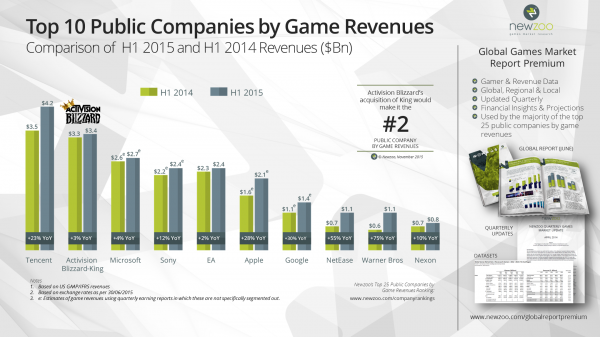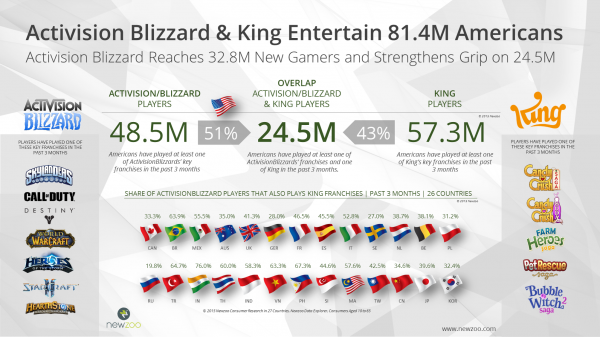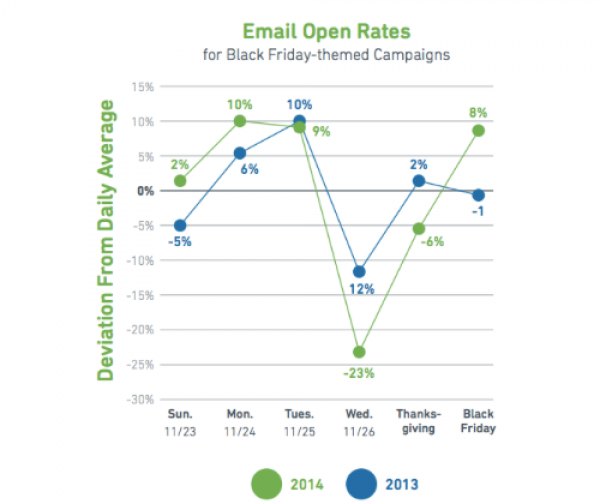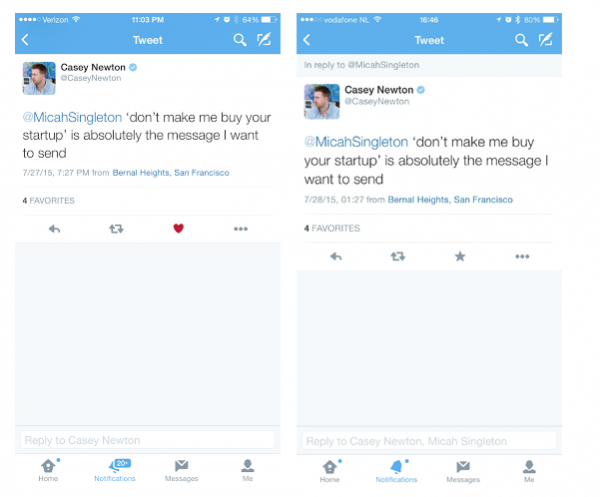It’s been a while since we’ve seen large company buyouts like Microsoft purchasing Mojang for over $2 billion, or Disney acquiring the rights to LucasFilm and therefore Star Wars for $4 billion. However, both those examples are dwarfed by Activision Blizzard, which is going through with the biggest mobile company buyout to date.
Activision Blizzard announced in a press release late yesterday evening that it has acquired King Digital Entertainment, the creators of Candy Crush Saga and other popular mobile games, for an estimated at $5.9 billion.
Through the deal, shareholders for the company will receive $18 a share, but King will continue to operate as an independent unit headed by chief executive officer Riccardo Zacconi and others.
The press release states, “Activision Blizzard believes that the addition of King’s highly-complementary business will position Activision Blizzard as a global leader in interactive entertainment across mobile, console and PC platforms, and positions the company for future growth.”
Bobby Kotick, chief executive officer of Activision Blizzard, further adds that “The combined revenues and profits solidify our position as the largest, most profitable standalone company in interactive entertainment. With a combined global network of more than half a billion monthly active users, our potential to reach audiences around the world on the device of their choosing enables us to deliver great games to even bigger audiences than ever before.”
“Riccardo, Sebastian (Knuttson, CCO) and Stephane (Kurgan, COO) are some of the best minds in the business, and we have long-admired King for consistently creating incredibly fun, deeply engaging free-to-play games that capture the imaginations of players across ages and demographics. Activision Blizzard will provide King with experience, support, and investment to continue to build on their tremendous legacy and reach new potential. We share an unwavering commitment to attracting and developing the best talent in the business, and we are excited about what we will be able to accomplish together.”

Newzoo, which published its Top 25 Public Companies by Game Revenues report just yesterday, revised its findings in light of this deal. With King, Activision Blizzard now has a reach of approximately 81.4 million Americans in the mobile market. It also pointed out that, with the two companies bring in a combined income of $3.4 billion in half-year revenues, based on data collected in the report.
“People who think the $5.9 billion valuation is too high are wrong,” said Newzoo CEO Peter Warman about the findings. “One key value element is a complementary pipeline in terms of games in development. In addition to its Saga series, King has been rumored to be working on several mid-core games that will soon see daylight. I am certain Activision Blizzard has taken this into account in the valuation. Having King’s experience in running and monetizing mobile games as a service will be a priceless asset to a company that is still on the learning curve when it comes to mobile.”
Warman, spoke with [a]listdaily about what the potential impact this acquisition could have. “Activision wants to be the world’s biggest interactive entertainment company, and this is a huge step in that direction with only Tencent ahead of them on a global scale but leaving EA, Sony and Microsoft behind them in the Western world. I think it saves Activision at least two years in building up an organization and the expertise to develop, launch and run mobile games as a service on a global scale. This has become a true science or art, requiring different competences. To put that knowledge to work for all Activision Blizzard’s franchises and mobile marketing efforts is huge.”
As how Activision will further shift to mobile, Warman stated, “I think the new mobile franchises to be launched by Activision Blizzard will come from both studios. King is rumored to have a number of mid-core games in development, and following the success of Hearthstone, Activision Blizzard must also have some new titles coming up. These will be managed by teams that are a mix of both companies. Making successful PC or console franchises available on mobile is risky business. Companies such as Blizzard now realize that becoming a true cross-screen entertainment franchise does not particularly mean that you have to launch the game on each screen. As video and games converge through tools and platforms like Twitch, Hitbox, Mobcrush, Kamcord it turns out the mobile screens are the perfect viewing screens, and the PC and console the gaming screens. Therefore I believe that it will be new titles and franchises that will lead the charge for the new entity.”
Activision can also see expansion with the acquisition of the King brand. “It remains to be seen how Activision Blizzard handles the branding of Candy Crush, etc. over time. Will King become their Casual brand or will Activision be reborn as a brand that publishes across all genres as it did in the past Despite a higher overlap ratio than many might expect, it gives Activision Blizzard at least a couple hundred million mobile gamers that they previously could not get in touch with.”
King also gives the game publisher an even greater global foothold, particularly in China, to which Warman states, “Only a very limited number of Western publishers have proven to be successful in the $6.5 billion China mobile games market. King is one of them, Blizzard a second. Supercell outperforms King in China because its genre that appeals more to the big game spenders. I expect it is exactly these mid-core genre that will be the next big step for King and Activision Blizzard.”
Newzoo broke down the numbers even further, by regional demographic, in thee chart below, with 48.5 million Activision Blizzard players and 57.3 million King players included, with 24.5 million of them overlapping into both companies.

Re/Code’s Peter Kafka had his own thoughts on the matter, indicating that some form of buyout for King was inevitable, following the company’s move to public stock back in March. It started out at $22.50 a share, only to drop down to $18.08 over the following months, making it prime for a pick-up.
“The thing about creating a megahit game in the iPhone/Android era is that there’s no flywheel effect: A Megahit gives you resources to market other games, which is nice. But no one has been able to prove that making one megahit lets you make other megahits. Ask Rovio, the people behind Angry Birds,” says Kafka.
“King’s gross bookings — its preferred analog for revenue — peaked in the third quarter of 2013, when they hit $648 million. Last quarter, they were down to $530 million. That’s still an amazing amount of money to make from a very small percentage of people: 340 million play King’s games, and only 7.6 million of them — 2.2 percent — pay King anything when they play. This quarter, that translated to $119 million in profits.”
Now the only real question is what kind of impact will come from the deal, and how Activision Blizzard could change its approach to mobile. The publisher has released various Call of Duty related games on iOS and Android, along with the recently released Guitar Hero Live. However, the company’s presence on mobile has been limited, with its most successful mobile games being Hearthstone and Skylanders.
With King, Activision Blizzard’s mobile presence, and gaming revenues leap far ahead. We can only wait and see.








